
Nurses at People's Hospital 115 take care of patients - Photo: DUYEN PHAN
Not stopping there, recently Ho Chi Minh City has issued a list of 35 diseases and groups of diseases that are transferred directly from the initial level to the advanced level without having to go through the basic level as before.
Many people with serious illnesses have their burden lightened.
Previously, even patients with serious or rare diseases - diseases that could not be treated at lower-level facilities - still had to go through a complicated process to be transferred to another hospital. Patients had to follow the procedure of applying for a transfer certificate at the primary health care facility, then to the district hospital, then to the provincial hospital, and finally to the central hospital.
From 2025, according to new regulations related to technical expertise in medical examination and treatment, these patients will be allowed to go directly to specialized hospitals without a referral letter.
Specifically, according to the new Law on Medical Examination and Treatment, medical examination and treatment facilities will be divided into three levels of technical expertise: initial level, basic level and advanced level (instead of the previous four levels). From January 1, 2025, the Ministry of Health has issued a list of 62 rare and serious diseases that do not require a referral letter and patients are still entitled to 100% of the health insurance benefits.
According to Tuoi Tre, at many hospitals today, some patients with rare and serious diseases do not have to go back and forth to get a referral letter from their local area to go to a specialized hospital for treatment. At hospitals such as Cho Ray, Ho Chi Minh City Oncology, K, Hanoi Oncology, Nguyen Trai, Nhan Dan 115..., patients said they have less trouble getting a referral letter.
Treating lymphoma at K Hospital since 2024, Mr. Nguyen Van Manh ( Ninh Binh ) shared that every 20 days he goes to Hanoi to receive chemotherapy. After finishing the treatment and being discharged from the hospital, each time he goes to K Hospital, he has to "start over" and apply for a hospital transfer certificate to receive health insurance.
"However, according to the re-examination schedule on January 10, I was informed that I no longer need to bring the referral letter. From then on, every time I go to the hospital, I do not need to go to the district hospital to get the letter, saving time and effort," Mr. Manh shared.
According to the representative of K Hospital, since the beginning of 2025, more than 20,000 cancer patients treated at K Hospital have not had to apply for a new referral. This has created favorable conditions for patients and reduced administrative procedures for health insurance patients.

Patients come to see a doctor at the Orthopedic Trauma Hospital (HCMC) - Photo: DUYEN PHAN
Each locality has a specialized hospital.
Speaking with Tuoi Tre, Dr. Le Anh Tuan, head of the general planning department of People's Hospital 115, shared that the hospital is classified as a specialized level, and from January 1, 2025, it has applied the elimination of referral papers for 62 rare and dangerous diseases as stipulated in Circular No. 01/2025/TT-BYT.
Accordingly, patients who go for outpatient examination with unknown disease, if the screening detects and is diagnosed with a disease on the list of 62 diseases above, will be entitled to 100% health insurance at the prescribed level.
In the case of a patient being diagnosed and determined to have a disease on the list of 62 diseases at the basic level, initially, they will automatically be entitled to insurance benefits without needing a referral. This greatly reduces the inconvenience for the patient.
Doctor Tuan said that currently each locality has a specialized hospital to meet the treatment needs of the people, so the risk of going to higher levels is very low.
"The hospital has handled many cases of patients with 1/62 of the above diseases, including cases of cancer, stage 3 and 4 heart failure... The hospital has flexibly handled patients from other provinces, not just Ho Chi Minh City," said Dr. Tuan.
At the Ho Chi Minh City Institute of Traditional Medicine, Dr. Truong Trung Hieu, head of the general planning department, said that since the implementation of the regulation, the institute has received nearly 600 patients transferred directly from the initial level; most of these cases are related to cancer, metabolic disorders, etc.
Among the groups of diseases transferred from the initial to the advanced level of medical examination and treatment, there are many groups of diseases related to obstetrics and gynecology such as miscarriage; abortion; complications of labor, delivery and postpartum; edema, high blood pressure during pregnancy, delivery and postpartum...
Mr. Tran Ngoc Hai, Director of Tu Du Hospital (HCMC), said that the hospital accepts all cases of patients at all levels from initial to basic, including patients who go beyond the level. Therefore, many patients with diseases specified in Circular No. 01/2025 of the Ministry of Health are entitled to health insurance when examining and treating at the hospital without needing a referral from the initial level.

Previous and current transfer procedures - Graphics: TAN DAT
Ho Chi Minh City reduces more procedures
In addition to the list of 62 rare and critical diseases that are transferred directly to the specialized level, Ho Chi Minh City has recently issued a list of 35 diseases and groups of diseases that are transferred directly from the initial level to the specialized level without having to go through the basic level as before.
According to the patient transfer regulations of Circular 01 (Ministry of Health), medical facilities can transfer patients from the initial level directly to the specialized level in case the basic level does not meet the treatment requirements.
In accordance with this regulation, the Ho Chi Minh City Department of Health has issued a list of 35 diseases and groups of diseases that are transferred directly from the initial medical examination and treatment level to the advanced level, without going through the basic level. The 35 groups of diseases will correspond to disease codes, along with conditions and conditions.
This means that instead of the patient having to request a referral letter as prescribed from the initial level to the basic level, from the basic level to the advanced level, if suffering from one of these 35 diseases, the initial medical facility (health station, clinic, medical center...) can transfer the patient directly to the advanced level (equivalent to the previous provincial and central hospitals) without having to go through the initial level (equivalent to the previous district level).
For the remaining cases (not included in this list), the units must comply with the regulations on transferring patients between health insurance examination and treatment facilities in accordance with the prescribed procedures. For the list of 62 disease groups, medical examination and treatment at the specialized level is still possible without a referral letter.
Speaking to Tuoi Tre, Ms. Tran Thi Trang, Director of the Health Insurance Department (Ministry of Health), said that regulations on transferring patients between medical facilities have been expanded, creating the most favorable conditions for patients, especially those with rare and serious diseases.
Accordingly, the list of 62 diseases was selected based on careful assessment by the professional council, upper-level hospitals and basic medical facilities. Diseases that can only be diagnosed and treated effectively at specialized hospitals have been included in this list.
In addition, about 105 other disease groups listed in Appendix 2 are handled by primary health care facilities. Notably, all 62 specialized diseases can also be admitted to primary health care facilities when necessary. In addition, the Ministry of Health also issued a list of 37 diseases and groups of diseases that are granted a hospital transfer certificate valid for one year.
"Thus, rare and dangerous diseases that require surgery or advanced techniques that low-level medical facilities are not capable of diagnosing and treating will be transferred directly to the specialized level. In addition, patients with diseases that basic facilities are not capable of diagnosing and treating will also be transferred directly to the specialized level.
This option helps to reasonably divide patients, avoiding overload at upper-level hospitals due to the common mentality of people that only when they hear about serious illness do they want to transfer to a higher level to feel secure," said Ms. Trang.
Ms. Trang also emphasized that reality shows that not all diseases need to be transferred to higher levels, because many diseases can be effectively treated at lower levels if sufficient resources and expertise are invested. Medical facilities and people need to clearly understand the regulations to avoid overloading the final level.
How are Ho Chi Minh City hospitals classified by technical expertise?
According to the report of the Ho Chi Minh City Department of Health, the results of the technical professional ranking of medical examination and treatment facilities include: 30 facilities ranked at the specialized level (Tropical Diseases Hospital, Binh Dan Hospital, Nhan Dan 115 Hospital, Eye Hospital, Orthopedic Trauma Hospital...) and 140 medical examination and treatment facilities ranked at the basic level (An Binh Hospital, Nhan Ai Hospital, Cu Chi Regional General Hospital, Thu Duc City Hospital...).
In the private sector, Ho Chi Minh City has two specialized hospitals: My Duc General Hospital and Tam Anh; the remaining 84 private hospitals are classified as basic.
For medical examination and treatment facilities without inpatient treatment, ward/commune health stations, maternity homes and regional polyclinics with beds are classified as primary medical examination and treatment facilities.
Ho Chi Minh City Department of Health requires medical examination and treatment facilities to be responsible for maintaining the approved technical expertise level or requesting consideration for re-classification, the Department of Health will re-evaluate according to current regulations.
At the same time, publicize the results of technical and professional ranking of medical examination and treatment facilities in the city on the health sector's electronic information portal so that people can get information.
Why can't we get rid of hospital transfer papers?
According to Ms. Tran Thi Trang, if all patients are rushed to upper-level hospitals, from common to serious illnesses, then the seriously ill will be the first to be affected by the pressure of overload.
As a result, patients who really need priority, such as emergency cases, severe chronic illnesses or critical illnesses, will have to wait longer or be delayed in their treatment.
Not only that, the fact that patients with mild illness go beyond the prescribed level also causes losses to themselves and society. Mild illness but traveling far to higher levels means that patients have to spend more time waiting, travel and accommodation costs, affecting their daily life and work.
Financially, this increases unnecessary costs for the Health Insurance Fund - which is designed to share medical risks for the entire population. Therefore, referral papers will contribute to limiting hospital overload, enhancing the operational efficiency and treatment quality of hospitals.
Not everyone gets to go straight to the advanced level.

The patient was transferred from Dong Thap province to Cho Ray Hospital (HCMC) on the afternoon of August 6 - Photo: TU TRUNG
Not all cases with disease codes in the list issued by Circular 01 of the Ministry of Health are sent directly to a specialized level. Going directly to a specialized medical facility also depends on the conditions and status clearly specified.
Currently, many patients still have questions or are confused about referral papers when visiting the hospital for examination.
Ms. NT (42 years old, Tra Vinh) brought her daughter with lupus erythematosus to Cho Ray Hospital (HCMC) for examination, saying that in the past, she had to go to the local hospital to get a referral.
"Although the procedures are not complicated, it still takes time. Now my daughter and I are less worried and don't have to go back and forth many times to get referral papers," said Ms. T.
Ms. LN (HCMC) said that her 72-year-old mother, residing in Nghe An, went for a health screening in HCMC in early July and was diagnosed with stage 4 lung cancer (disease code C34). This disease is on the list of 62 rare and dangerous diseases that the Ministry of Health stipulates do not require referral procedures.
However, at the Oncology Hospital, her family was required to have a referral letter. Ms. N. questioned and was explained that the disease codes for the 62 diseases above must be accompanied by two conditions: people under 18 years old and do not apply to cases that have been diagnosed but do not have specific treatment indications.
At noon on August 6, while waiting to receive health insurance medicine at Nguyen Trai Hospital (HCMC), Ms. TL (64 years old) said that she has suffered from many chronic diseases for many years such as diabetes, musculoskeletal diseases, peripheral nerve damage...
At each follow-up visit, Ms. L. received medication for 21 days. According to Ms. L., diabetes with multiple complications is quite dangerous and requires close health monitoring. When hearing the news that many groups of patients were transferred from primary to advanced levels in Ho Chi Minh City without a referral letter, Ms. L. expressed satisfaction but wondered how she would know if her illness was "on this list".
Dr. Truong Trung Hieu also shared that in reality, there are still people who do not fully understand the regulations and therefore think that any disease can be transferred directly to a specialist level. Therefore, there needs to be clear and widespread communication so that people can have accurate information.
Primary health care facilities must refer patients with diseases according to the prescribed disease codes and appropriate accompanying conditions. At the same time, patients must also understand that only prescribed diseases can be directly referred to specialized facilities.
Learn carefully the list of diseases from the hospitals
Dr. Diep Bao Tuan, director of Ho Chi Minh City Oncology Hospital, said that in order for patients to better understand the health insurance policy, including the list of 62 rare and dangerous diseases that cannot be transferred to other hospitals, the hospital has increased communication on the hospital's fanpage and website and organized training for medical staff, making it easier for people to grasp information.
It clearly states that from January 1, 2025, 10 groups of cancer diseases will enjoy 100% of the health insurance benefits when they go to specialized clinics for examination and treatment, such as pancreatic malignancies, malignant tumors, brain malignancies, bone and cartilage malignancies in other locations...
Source: https://tuoitre.vn/them-quy-dinh-vuot-tuyen-co-loi-cho-nguoi-benh-20250807081014337.htm



![[Photo] Prime Minister Pham Minh Chinh receives CEO of Samsung Electronics](https://vphoto.vietnam.vn/thumb/1200x675/vietnam/resource/IMAGE/2025/8/26/373f5db99f704e6eb1321c787485c3c2)

![[Photo] Prime Minister Pham Minh Chinh chairs meeting of National Steering Committee on International Integration](https://vphoto.vietnam.vn/thumb/1200x675/vietnam/resource/IMAGE/2025/8/26/9d34a506f9fb42ac90a48179fc89abb3)


![[Photo] Multi-colored cultural space at the Exhibition "80 years of the journey of Independence - Freedom - Happiness"](https://vphoto.vietnam.vn/thumb/1200x675/vietnam/resource/IMAGE/2025/8/26/fe69de34803e4ac1bf88ce49813d95d8)







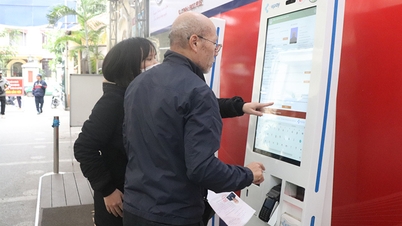





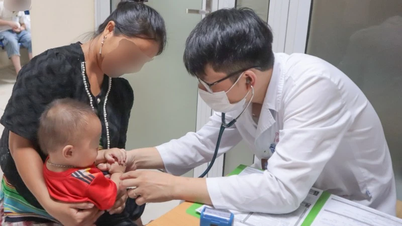


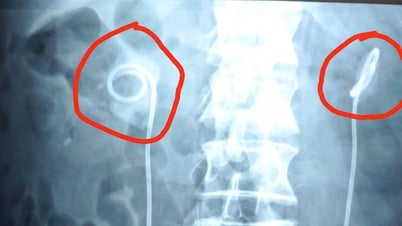










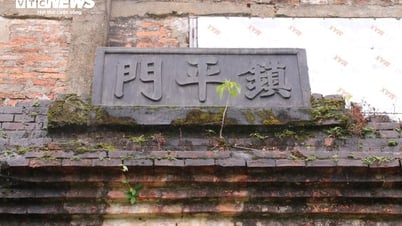





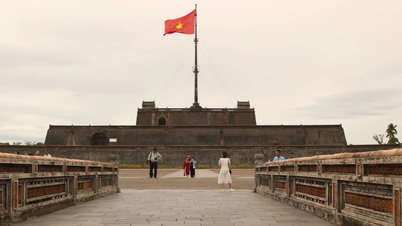

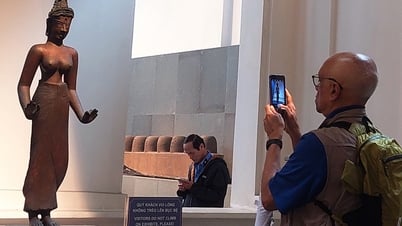







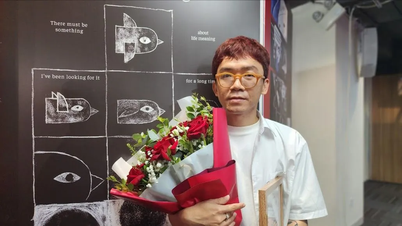




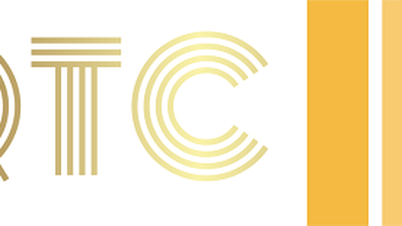




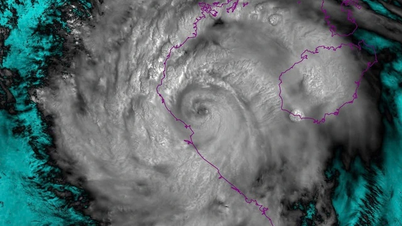














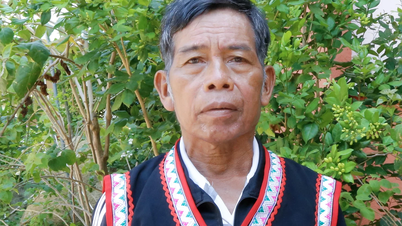


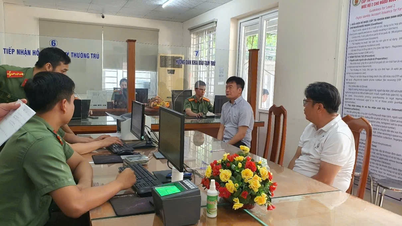


















Comment (0)